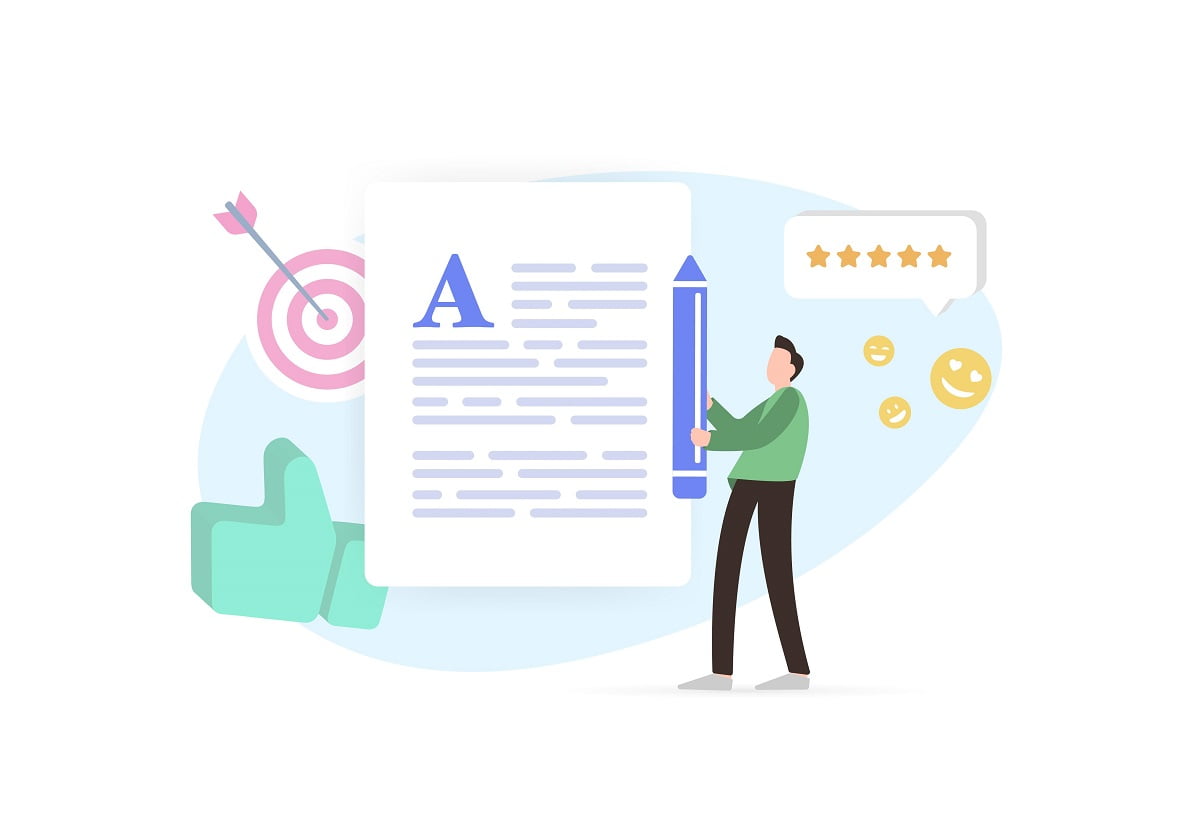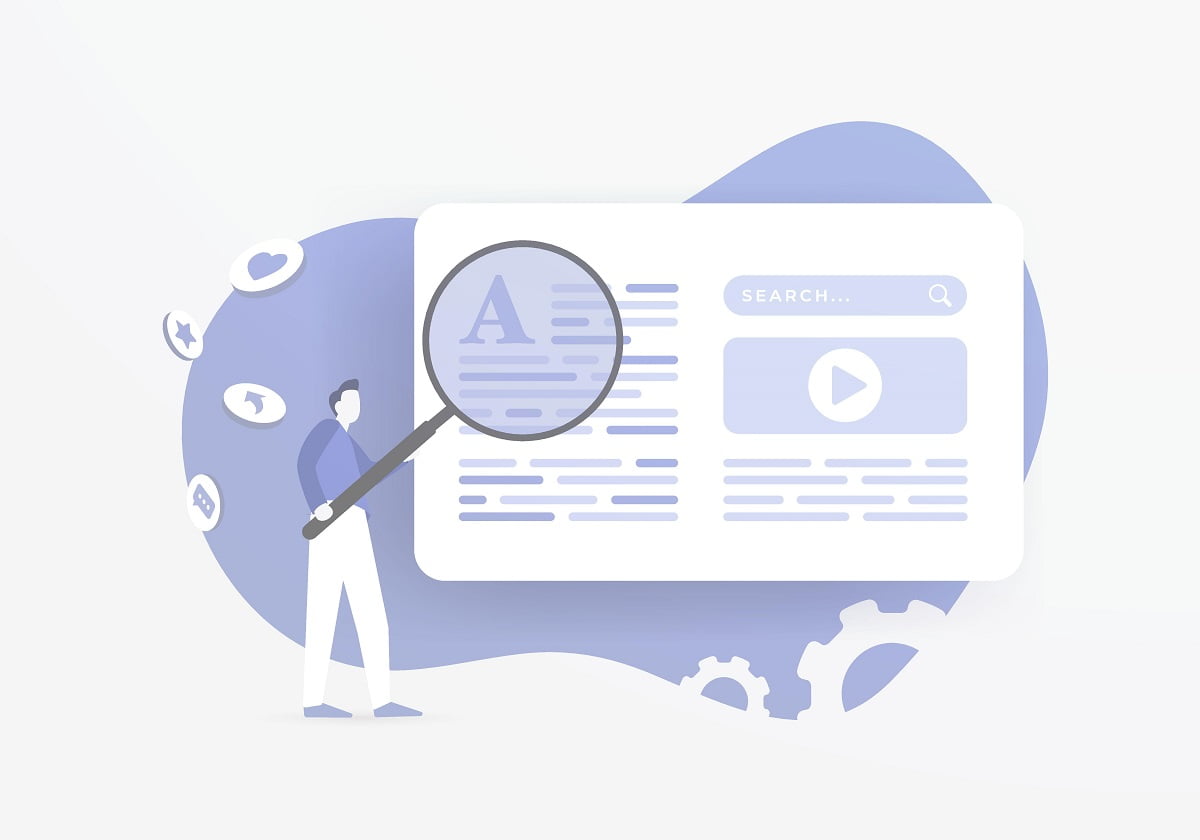Ultimate Blog Startup Checklist for New Bloggers

Starting a blog can be an exciting and fulfilling experience. Whether you’re looking to share your passions, grow your business, or establish yourself as an authority in your niche, blogging offers endless opportunities. However, before you start typing away, it’s essential to have a solid plan in place to ensure your blog’s success. That’s where the blog startup checklist comes in.
This ultimate blog startup checklist is specifically designed for new bloggers. It covers everything you need to start and launch your blog successfully, from selecting a platform and designing your blog to creating compelling content and optimizing it for search engines. Whether you’re a tech-savvy individual or someone who’s just starting out, this guide will help you set up your blog right the first time.
Key Takeaways:
- The ultimate blog startup checklist is your go-to guide for launching a successful blog.
- Selecting the right platform, designing your blog, creating high-quality content, and optimizing it for search engines are essential steps in the process.
- Building an engaged community, monetizing your blog, creating a blogging schedule, promoting your blog, analyzing your blog’s performance, and staying updated with blogging trends are crucial for your blog’s long-term success.
Setting Up Your Blog
Before you start creating content for your blog, it’s crucial to set it up properly. Follow this blog setup checklist to ensure you don’t miss anything:
| Step | Details |
|---|---|
| Choose a Platform | Consider which platform best suits your needs. Popular options include WordPress, Wix, and Squarespace. Research the features and limitations of each platform to make an informed decision. |
| Choose a Domain Name | Your domain name should be short, memorable, and easy to spell. Avoid using numbers and special characters, and try to use a .com extension if possible. |
| Choose a Hosting Provider | Select a reliable hosting provider that offers good server uptime and responsive customer support. Some popular hosting companies include Bluehost, SiteGround, and HostGator. |
| Install WordPress | If you choose WordPress as your platform, install it on your hosting server. Most hosting providers have a one-click installation process. |
| Select a Theme | Choose a theme that matches your brand and caters to your audience. Make sure the theme is responsive and easy to navigate. |
| Install Essential Plugins | Plugins can add essential functionality to your blog. Install plugins like Yoast SEO, Jetpack, and Akismet to improve your blog’s SEO, security, and features. |
| Create Essential Pages | Create an About page, a Contact page, and a Privacy Policy page to provide important information to your readers. |
By following this blog creation checklist for setting up your blog, you’ll ensure that your blog is well-prepared and ready to go.
Designing Your Blog
Your blog’s design is one of the most important aspects of attracting and retaining readers. A visually appealing and user-friendly design can make a huge difference in your blog’s success. In this section, we will guide you through the key elements to consider when designing your blog.
Choosing a Theme
Your blog’s theme is the foundation of your entire design. Choose a theme that reflects your brand and niche, and that includes all the features you need. Look for responsive themes that will adapt to different device sizes, and that are regularly updated and supported by the developer.
Customizing Your Layout
Customization is key to make your blog unique and appealing. Consider changing your font, color scheme, and typography to match your branding. Create a layout that is easy to navigate and doesn’t overwhelm your readers. Be sure to include high-quality images, videos, and other media to make your content more engaging.
Adding Essential Elements
Your blog’s design should include essential elements such as a logo, navigation menu, and search bar. Use clear and concise descriptions for categories and posts, and allow readers to share your articles on social media. Avoid clutter and keep your design simple and easy on the eyes.
Tip: Get feedback on your blog’s design from other bloggers or your target audience. Make adjustments and improvements based on their suggestions.
Elements to Consider when Designing Your Blog
| Element | Description |
|---|---|
| Theme | The foundation of your design |
| Layout | The visual arrangement of your content |
| Typography | The style and size of your font |
| Color Scheme | The palette of colors you use throughout your blog |
| Images and Media | The visual and interactive elements you include with your content |
| Logo | A visual representation of your brand |
| Navigation Menu | A set of links to help readers navigate your content |
| Search Bar | A feature that allows readers to search your blog for specific content |
| Social Sharing | Icons or buttons that allow readers to share your content on social media |
By following these design tips and guidelines, you can create a blog that is visually appealing, user-friendly, and engaging. Remember to keep your design simple, consistent, and aligned with your brand and niche.
Creating Compelling Content
Creating high-quality content is vital to the success of your blog. To ensure that your content resonates with your target audience, consider the following tips:
Conduct Keyword Research
Keyword research is an essential step in creating content that ranks well on search engines. Use tools like Keyword Planner and SEMrush to identify relevant keywords that your target audience is searching for.
Develop a Content Strategy
A well-defined content strategy can help you produce content that is aligned with your blog’s goals and your target audience’s needs. Consider creating an editorial calendar to plan your content in advance and ensure consistency.
Craft Blog Posts That Captivate Your Readers
When writing blog posts, aim to provide value to your readers while maintaining an engaging writing style. Use subheadings, bullet points, and images to break up your content and make it easy to read.
Pro tip: Don’t shy away from expressing your own opinions and ideas in your blog posts. It’s what makes your content unique and engaging.
By following these guidelines, your blog posts will be informative, engaging, and appealing to your readers’ needs.
Optimizing Your Blog for Search Engines
Now that you have your blog set up and running, the next step is to ensure that it’s optimized for search engines. This will help increase your visibility, attract organic traffic, and grow your blog’s audience.
Keyword Optimization
One of the most important aspects of SEO is keyword optimization. This involves researching and selecting relevant keywords that your target audience might use to search for content similar to yours. You can then strategically incorporate these keywords into your blog posts, meta descriptions, and headlines to improve their ranking on search engine results pages.
Meta Tags
Meta tags are snippets of HTML code that provide information about your blog to search engines. These include titles, descriptions, and keywords that summarize the content of your blog. By optimizing your meta tags, you can provide search engines with valuable information that can help your blog rank higher.
XML Sitemaps
An XML sitemap is a file that lists all the pages on your blog and provides search engines with an organized map of your site’s content. By submitting your sitemap to search engines, you can help them understand the structure of your blog and index your content more efficiently.
Link Building Strategies
Link building involves acquiring links from other websites that point to your blog. This can help increase your blog’s credibility and authority in the eyes of search engines, which can improve its ranking. Some effective link building strategies include guest posting, collaborating with other bloggers, and participating in online communities.
Tip: Avoid keyword stuffing or over-optimizing your content, as search engines may penalize your blog for this. Instead, focus on creating high-quality, valuable content that naturally incorporates keywords and appeals to your audience.
Optimizing Your Blog for Search Engines Checklist
| Checklist Item | Complete |
|---|---|
| Conduct keyword research to identify relevant keywords for your blog | [ ] |
| Incorporate keywords into your blog posts, meta descriptions, and headlines | [ ] |
| Optimize your meta tags | [ ] |
| Create an XML sitemap and submit it to search engines | [ ] |
| Develop link building strategies | [ ] |
By following the checklist above, you can ensure that your blog is fully optimized for search engines. However, keep in mind that SEO is an ongoing process, and you should continuously monitor and update your strategies to adapt to changes in search engine algorithms and user behavior.
Building an Engaged Community
A successful blog is not just about great content. It’s also about engaging with your readers and building a loyal community. Follow these strategies to build an engaged audience and take your blog to the next level:
Social media is a great way to reach potential readers and promote your blog. Share your blog posts regularly and engage with your followers to build relationships.
| Social Media Platform | Best Practices |
|---|---|
| Share your blog posts and engage with your followers by responding to comments and messages. | |
| Use relevant hashtags and tag other users to increase visibility and engagement. | |
| Share visually appealing images and use relevant hashtags to reach new followers. |
2. Foster reader interaction
Encourage your readers to interact with your blog by providing opportunities for comments, feedback, and discussions. Respond to comments promptly and build a sense of community with your readers.
Building authority within your niche can help you attract new readers and build loyalty with your existing audience. Write high-quality content, collaborate with other bloggers, and share your expertise to build a strong personal brand.
By following these strategies, you can build an active and engaged community around your blog, ultimately leading to greater success and fulfillment in your blogging journey.
Monetizing Your Blog
Now that your blog is up and running, you may be wondering how you can turn it into a source of income. Monetizing your blog requires strategy and patience, but it can be achieved with dedication. In this section, we’ll explore various monetization strategies to help you earn money from your blog.
Affiliate Marketing
Affiliate marketing is a popular way to earn money from your blog by promoting other people’s products. When someone clicks on your unique affiliate link and makes a purchase from the merchant’s site, you earn a commission. To get started, sign up for an affiliate program and find products that align with your blog’s niche and audience. Include your affiliate links in your blog posts and product reviews, and disclose your partnership with the merchant to maintain transparency.
Sponsored Content
Another way to monetize your blog is by creating sponsored content for brands. Sponsored content is any content that is created specifically for a brand or advertiser and is usually compensated. To get started, reach out to brands in your niche and pitch your ideas for sponsored posts. Make sure to disclose sponsored content to your audience to maintain transparency.
Creating and Selling Your Products or Services
If you have a product or service to offer, you can sell them directly on your blog. This strategy is particularly effective if you have a loyal audience and a strong brand. Some common examples of products or services that bloggers sell include e-books, courses, merchandise, coaching, and consulting services. Ensure the product or service aligns with your blog’s niche and audience to maximize sales.
| Monetization Strategy | Pros | Cons |
|---|---|---|
| Affiliate Marketing | Low overhead costs, passive income, potential to earn high commissions | Reliance on third-party merchants, commission rates may vary, requires transparency to maintain audience trust |
| Sponsored Content | Potential for high earnings, exposure to new audiences, opportunities for partnerships with brands | May compromise editorial integrity, audience trust, and authenticity if not executed transparently. Partnership with brands must comply with FTC guidelines. |
| Creating and Selling Your Products or Services | High potential for revenue, full creative control, aligns with your blog’s niche and audience, opportunities for expansion and diversification | High overhead costs, limited revenue if your product or service does not appeal to your audience |
Whichever monetization strategy you choose, it’s important to remember that your audience should always come first. Prioritize providing value to your readers, and only promote products or services that align with your blog’s values and mission. With patience, dedication, and a willingness to adapt, you can successfully monetize your blog and turn it into a source of income.
Creating a Blogging Schedule
Consistency is key in the world of blogging. Developing a blogging schedule is crucial for consistently publishing high-quality content, engaging with your audience, and growing your blog over time. Here’s a simple blog planning checklist to help you create your own blog schedule:
| Tasks | Frequency |
|---|---|
| Brainstorming content ideas | Weekly |
| Keyword research | Monthly |
| Creating an editorial calendar | Quarterly |
| Writing, editing, and publishing posts | Weekly |
| Promoting posts on social media and other channels | Weekly |
| Engaging with readers through comments and social media | Daily |
Creating a blogging schedule can help you stay organized and focused, reducing stress and ensuring that you publish content consistently. Remember to keep your publishing frequency realistic and achievable. Starting small and gradually increasing can help you avoid burnout and maintain your blogging momentum.
Promoting Your Blog
So, you’ve got great content! That’s amazing. However, publishing great content is only half the battle. You also need to promote your blog effectively to reach a wider audience. Below are various recommended promotional strategies:
Social Media Marketing
Share your blog posts on social media platforms such as Twitter, Facebook, LinkedIn, and Instagram. Engage with your followers and encourage them to share your content with their audiences, increasing your visibility and attracting new readers.
Guest Posting
Write guest posts for other blogs in your industry, which will help you build relationships with other bloggers and tap into a new audience pool. Make sure to include a link back to your blog in your author bio or within the content.
Email Marketing
Build an email list of your readers and send out newsletters and other communications regularly. Keep your subscribers informed about new blog posts, exclusive content, and special promotions.
Collaborations with Other Bloggers
Collaborate with other bloggers in your niche, whether it be through guest posting, co-hosting webinars, or even creating a podcast together. This will help you tap into their audience and vice versa, thereby increasing your reach.
By following this blog promotion checklist, you will increase your blog visibility and attract more readers over time. Be consistent in your promotional efforts, and you will see the payoff in the form of a growing audience.
Analyzing Your Blog’s Performance
Now that your blog is up and running, it’s time to assess its performance and identify areas for improvement. With the help of analytics tools and metrics, you can gather data on your blog’s traffic, engagement, and conversion rates.
Analytics Tools
Google Analytics is a powerful tool for tracking your blog’s performance. It provides detailed insights into your audience demographics, behavior, and acquisition sources. You can also monitor your blog’s traffic and track key metrics such as bounce rates, session durations, and pageviews.
“Analytics is the lens through which we observe the user experience.”
Avi Goldfarb
Other useful analytics tools include:
- SEMrush for monitoring keyword rankings and backlinks
- Hotjar for understanding user behavior on your blog
- Moz for tracking your blog’s domain authority and search engine visibility
Metrics to Track
When analyzing your blog’s performance, it’s essential to track relevant metrics that align with your goals and objectives. Here are some key metrics to consider:
| Metric | Description |
|---|---|
| Pageviews | The total number of pages viewed on your blog |
| Unique Visitors | The number of distinct individuals who visited your blog |
| Bounce Rate | The percentage of visitors who leave your blog after viewing only one page |
| Session Duration | The average amount of time visitors spend on your blog |
| Conversion Rate | The percentage of visitors who complete a specific goal, such as signing up for a newsletter or making a purchase |
By tracking these metrics over time and comparing them to industry benchmarks, you can gain valuable insights into your blog’s performance and make data-driven decisions to improve it.
Staying Updated with Blogging Trends
As a blogger, it’s vital to keep up with the latest trends and best practices to remain relevant and successful in the long run. Here are some tips and resources to help you stay updated:
Attend Conferences and Events
Attending blogging conferences and events is a great way to stay up to date with the latest trends and network with fellow bloggers. Keep an eye out for conferences and events in your niche and make an effort to attend them.
Follow Industry Experts and Influencers
Following industry experts and influencers in your niche is an excellent way to stay informed about the latest trends and changes in the industry. Subscribe to their blogs or newsletters and follow them on social media.
Read Industry Publications
Industry publications such as blogs, magazines, and newsletters are a great source of information for new trends and emerging practices. Make sure to subscribe to relevant publications in your niche to stay informed.
Take Online Courses
Online courses are an excellent way to learn new skills and stay updated with the latest trends in your niche. Look for courses offered by industry leaders and influencers in your niche.
Experiment with New Tools and Techniques
Experimenting with new tools and techniques is an excellent way to stay ahead of the curve. Keep an eye out for emerging tools and techniques and try them out to see how they can benefit your blog.
Conclusion
You have now completed the ultimate blog startup checklist for new bloggers. By following these steps and implementing the strategies discussed, you are well on your way to building a successful blog. Remember to stay consistent, adapt to changes, and always prioritize providing value to your audience. Happy blogging!
FAQ
What is included in the ultimate blog startup checklist for new bloggers?
The ultimate blog startup checklist includes essential steps for setting up and optimizing your blog, creating compelling content, building an engaged community, monetizing your blog, creating a blogging schedule, promoting your blog, analyzing your blog’s performance, and staying updated with blogging trends.
How do I set up my blog?
To set up your blog, you need to choose the right platform, select a domain name, and find a reliable hosting provider. You also need to install a blogging software or content management system (CMS) and customize the design and layout of your blog.
What should I consider when designing my blog?
When designing your blog, you should consider choosing a theme that matches your niche and audience, customizing the layout to make it user-friendly, adding a logo and navigation menu, and ensuring that your blog is visually appealing and easy to navigate.
How can I create compelling content for my blog?
To create compelling content, you should conduct keyword research to understand what your target audience is searching for, develop a content strategy to address their needs and interests, and craft engaging blog posts with a clear structure, informative content, and a relatable tone.
What is blog optimization and why is it important?
Blog optimization refers to the process of making your blog more visible to search engines and improving its ranking in search results. It includes optimizing your content with relevant keywords, using meta tags and XML sitemaps, and implementing link building strategies. Optimization is important because it helps you attract organic traffic and grow your blog’s audience.
How can I build an engaged community for my blog?
To build an engaged community, you can promote your blog on social media, encourage reader interaction through comments and discussions, respond to comments and feedback, and establish yourself as an authority in your niche by providing valuable and insightful content.
How can I monetize my blog?
There are various ways to monetize your blog, including affiliate marketing (earning a commission for promoting products or services), sponsored content (getting paid for featuring sponsored posts or reviews), and creating and selling your products or services (such as e-books, courses, or consulting services).
How do I create a blogging schedule?
To create a blogging schedule, you should determine how frequently you can realistically produce high-quality content, set specific publishing days and times, plan your content topics in advance, and use scheduling tools to automate the publishing process.
What are effective strategies for promoting my blog?
To promote your blog, you can leverage social media marketing by sharing your blog posts on relevant platforms, guest post on other blogs to reach new audiences, use email marketing to engage with your subscribers, and collaborate with other bloggers or influencers in your niche.
How can I analyze my blog’s performance?
You can analyze your blog’s performance by using analytics tools like Google Analytics, monitoring key metrics such as page views, average time on page, bounce rate, and conversion rates. These insights can help you identify what content performs well and make data-driven decisions to improve your blog.
How can I stay updated with blogging trends?
To stay updated with blogging trends, you can follow industry blogs and influencers, join blogging communities or forums, attend conferences or webinars, and regularly educate yourself about new strategies, tools, and best practices in the blogging world.





